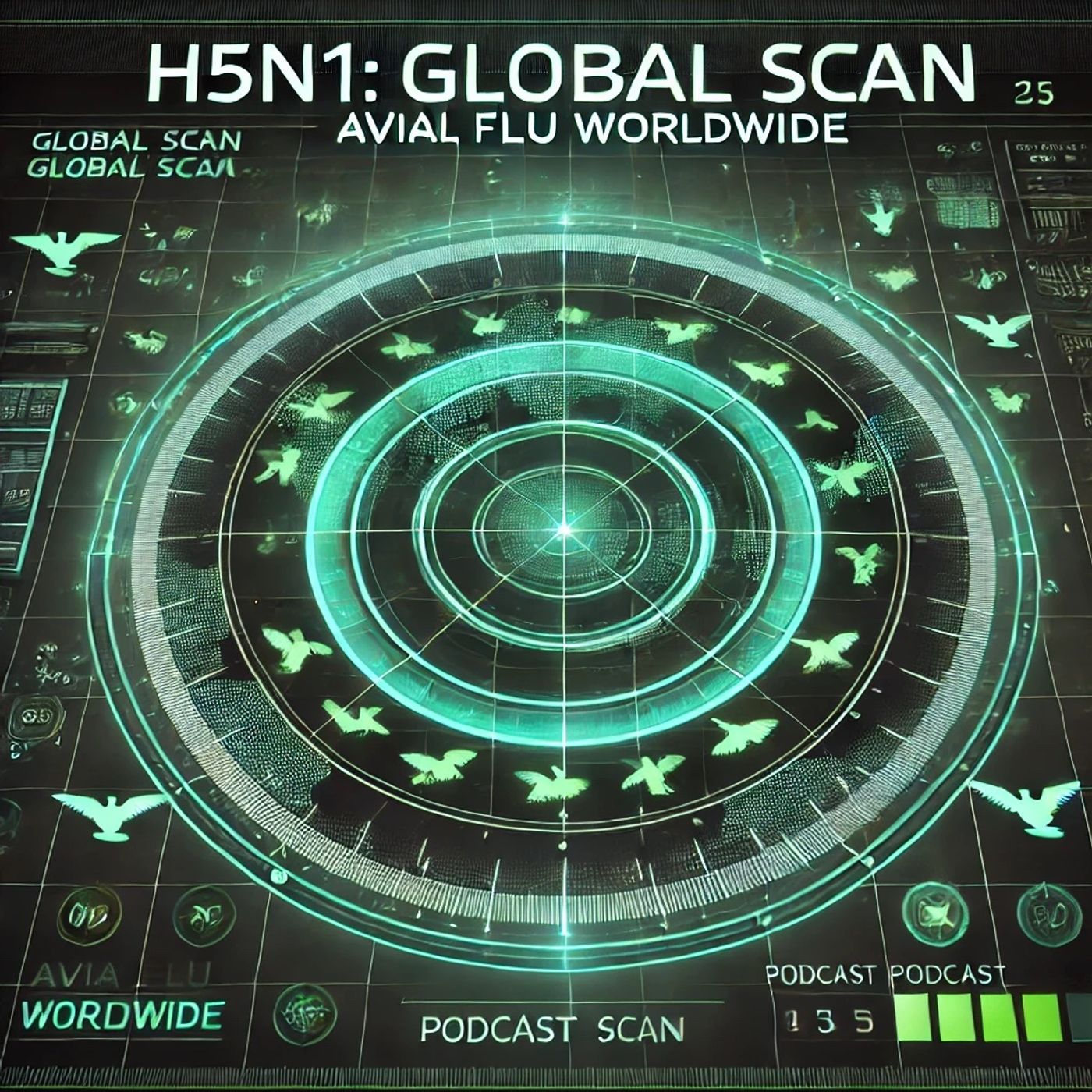Podcast Episode Details
Back to Podcast Episodes
Global H5N1 Outbreak: 26 New Human Cases Reported Worldwide, WHO Maintains Low Pandemic Risk in 2025
This is H5N1 Global Scan: Avian Flu Worldwide.
Around the globe, H5N1 avian flu continues reshaping the health and economic landscape. From January to early August 2025, the CDC reports 26 new human cases worldwide, with tragic fatalities in Cambodia, India, and Mexico. All cases had known poultry exposures, and—importantly—there is still no evidence of sustained human-to-human transmission. The World Health Organization underscores the risk remains low for the general population, but highlights ongoing vigilance, especially among those working closely with animals.
Let’s break it down continent by continent. In Asia, unprecedented animal outbreaks are matched by a disturbing rise in human cases, especially in Cambodia, where the WHO notes an unusual surge of 11 cases and a 44% fatality rate just this year. India and other Southeast Asian nations grapple with outbreaks and occasional spillover into humans, mostly in rural poultry-keeping households.
Across Europe, routine surveillance continues. The United Kingdom remains on high alert after detecting infected livestock workers this year. The core strategy here has been rapid farm quarantines, large-scale poultry culling, and ongoing wildlife monitoring.
Moving to Africa, recurrent poultry outbreaks, especially along migratory bird pathways, threaten food security and trade. With limited resources, countries focus on culling and local restrictions, while transnational support centers on laboratory capacity and compensation programs.
In the Americas, both North and South America report continued animal cases. The United States, tracked by the CDC, has seen 70 human cases since 2024 and one fatality. National farm biosecurity measures and culling operations are the backbone of the response, while regional trade impacts have included major poultry export restrictions and egg shortages, especially after the fall 2024 outbreak led to the culling of 20 million chickens.
International organizations play a critical role. The WHO and Food and Agriculture Organization drive cooperation via global surveillance networks and joint task forces. Standardized case definitions, real-time genetic sequencing, and rapid alert systems streamline outbreak responses. The Pan American Health Organization has highlighted how H5N1’s stable genetic makeup keeps pandemic risk low, but the virus’s adaptation to new mammal hosts—recently seen in cattle and sea mammals—remains a key research priority.
Vaccine development is accelerating. Multiple countries, including China, the US, and members of the European Union, are trialing new candidate vaccines for both poultry and humans. However, approval and mass deployment remain months, if not years, away. Wider access, stockpiling strategies, and international sharing agreements are still active points of debate.
On containment, approaches differ widely. China pursues zero-tolerance culling and mass immunization of flocks. The EU emphasizes coordinated surveillance and compensation for farmers. The US relies on rapid response and interagency task forces, while African and Latin American nations depend heavily on international technical and financial support.
Cross-border issues—from poultry smuggling to migratory bird flyways—make true containment a global challenge. International trade restrictions, especially on poultry and eggs, have had significant economic repercussions, with the World Organisation for Animal Health facilitating ongoing negotiations and standards.
Thanks for tuning in to H5N1 Global Scan. Join us next week for more frontline updates from around the world. This has been a Quiet Please production. For more, check out Quiet Please dot AI.
For more http://www.quietplease.ai
Get the best deals https://amzn.to/3OD
Published on 1 week, 3 days ago